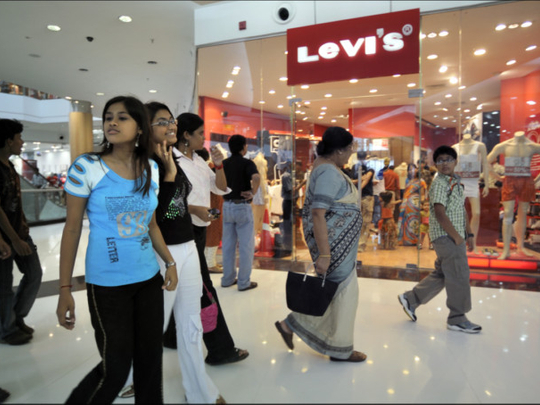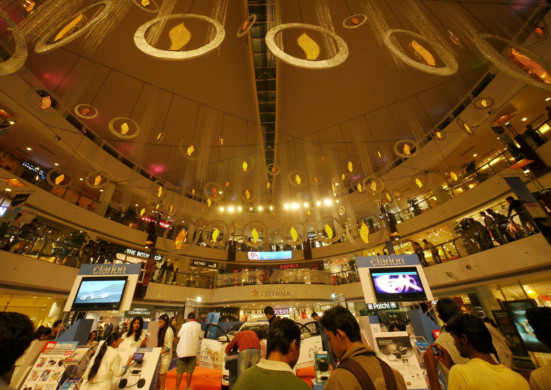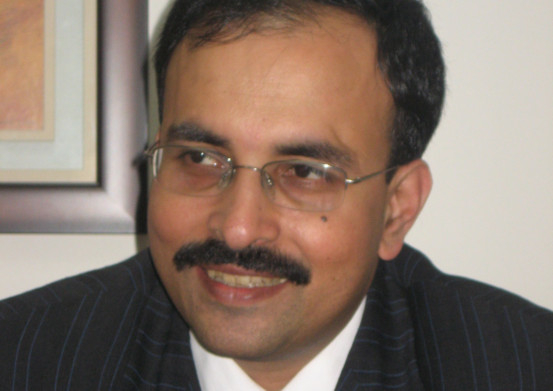
The Indian government’s decision to permit foreign direct investment (FDI) in single-brand and multi-brand retail has spurred activity in diverse segments.
Ikea, the poster child for FDI, is creating business plans for 25 stores in India over the next decade and beyond. Some companies are breaking up with their franchisees to launch on their own. The ruling Congress and the opposition Bharatiya Janata Party are both commencing awareness drives to tell the public that FDI is good or bad for them. Real estate majors with malls in the making are holding off signing agreements, hoping to get their pick of tenants by 2015-16. Academics and experts are making inroads into the small and medium enterprise (SME) sector, which is a required source for foreign brands.
Even though analysts are clear that there will be an 18-24 month lag before the consumer gets a taste of real developments, the next hold-up, they say, will be over space.
“Not only does India have poor infrastructure and back-end support but it is really difficult to find space,” Shubhranshu Pani, Managing Director, Retail Services, Jones Lang LaSalle India, tells GN Focus. This will be the biggest bottleneck.
“Real estate is expensive. City centres are unplanned. There are no guidelines for development. Retailers should be conscious of this while planning speed of growth.”
Shopping centres in India have long complained of not having enough brands to choose from as tenants. “The new brands are likely to open their initial outlets in the shopping centres with vacancies in order to take advantage of lower rents,” Guruduth Prabhu, Vice-President, Shopping Centres Association of India, tells GN Focus.
Already, he says, international consultants in mall management, facilities, building maintenance and parking categories are wooing real estate majors to offer new tenants malls with best practices.
Large interest
The snag is that some of the earlier malls are going empty because of inappropriate designs. Pani says that some malls have sold spaces to investors, so a retail tenant may have to deal with multiple owners, which no one likes.
The better malls, such as Select Citywalk in Delhi, Inorbit in Mumbai or Forum in Bengaluru, are already created to international standards. These, in fact, are more likely to have a waiting list. “We do see landlords saying that if their projects are completing in 2015 or 2016, they may benefit by earmarking spaces for newer retailers. Some of them are waiting. They are not signing anything until it gets urgent,” says Pani.
Middle East companies, says Prabhu, are more likely to come in as mall owners rather than tenants. “There is a large interest shown by Middle East companies in the development of shopping centres. In the retail real estate sector, there is immense potential.”
The fact that Walmart has disclosed it has spent $25 million (Dh91.8 million) since 2008 on lobbying in the US to gain access to the market demonstrates that India is attractive to large-format retailers, which become anchor stores in malls.
“I am waiting to see action in the hypermarket space, when Tesco and Target start looking at India. They have been talking to people but nothing concrete has emerged. Tesco has already got its cash-and-carry tie-up, but it has not announced anything new,” says Pani.
While it has made no proposals seeking permission to enter the space, since July last year Walmart and its joint venture (JV) partner, Bharti, and the vocational training arm of the government have been training 100 people a month to make them ready for jobs in the retail sector.
French retailer Carrefour, which manages its own cash-and-carry business in India, has been lying low. Tesco’s chief executive Philip Clarke made a quiet visit to India to meet Tata executives — they already have a JV. Germany’s Metro AG, present in India for around ten years, has said it will continue with cash and carry.
Everyone’s watching Ikea
Despite ten states deciding that they would welcome FDI, on the surface there is limited activity with few new entrants. The Indian Foreign Investment Promotion Board (FIPB) has approved four proposals for single-brand, where the government now allows 100 per cent FDI. Ingka Holding, Ikea’s parent company, proposes to invest in single-brand retail trading through a 100 per cent subsidiary. A 51 per cent joint venture of American luxury clothing retailer Brooks Brothers and Reliance Brands has been approved. Italian jewellery maker Damiani’s plans to form a venture with Mehta’s has been approved.
UK footwear chain Pavers England, which was selling via its franchisee, aims to enter on its own and has committed to a $20 million investment.
Ikea, with 336 stores in 44 countries, has been an early India aspirant and a test case. The company had sought approval to sell 30 items including textile products, consumer electronics, leather products, lifestyle products, and food and beverages to be served at its restaurants and cafes. While the proposal has been returned with approval for only 15 items, the Scandinavian firm has the support of Commerce and Industry Minister Anand Sharma, who says a new request may be considered favourably. Initial plans include ten furnishing and homeware stores in ten years, with an investment of $1.9 billion to eventually open a total of 25 stores.
“Ikea is on ground. They are already attending conferences here, enumerating what value they add. They have been sourcing from the country for a long while. For the past three to four years, they have been looking to open up on their own. It was only a matter of time,” says Pani.
Noida-based developer Supertech says it is in touch with the company, which is interested in a stand-alone store in Delhi — National Capital Region.
Foreign brands that are already in India are the most visible now. In many instances, brands have opted out of current partnership even though they remain optimistic about the long-term prospects of India. Market watchers say they are likely to return with new partners or on their own. Fashion brand Esprit and Aditya Birla Group’s Madura, for instance, ended their seven-year distribution agreement in December. Milan-based luxury fashion company Gianni Versace SpA has ended its franchise agreement with Blues Clothing Company.
Guess, which was already present in the country, plans a tie-up with Major Brands, marketer of Mango and Aldo in India.
New friends
Department chain Debenhams changed franchisees in September. Its new partner, Arvind, has announced plans to quadruple the number of stores to eight. Francis McAuley, International Director of Debenhams, also visited Bengaluru for a fashion event at Orion Mall in December.
Versace 19.69 Abbigliamento Sportivo has tied up with Majgenta Fashions, a clothing and leather exports company, for its India entry. Brands such as Marks & Spencer and Ermenegildo Zegna, which changed from franchisee operations to joint-venture partnerships, are role models of being second time lucky.
Pani says, “The first breed of retailers will be premium and super-premium brands from Europe. These are single brands with an India presence, with a partner, who have seen FDI increase gradually from 51 per cent to 100 per cent. They have invested four or five years in India. Now they need to increase the pace of investment. There is an increase in share holding. They are clearly seeing growth. They will continue investing in India.”
Sourcing in India
Not only European brands but many from the Asia-Pacific, including Singapore, are sending out feelers for entry.
The most discussed clause in the FDI proposal is the one that made it compulsory for foreign investors to source 30 per cent of their goods in the country. According to the rule, single-brand retailers do need to source 30 per cent of their goods from India, preferably from small and medium enterprises (SMEs), village and cottage industries, artisans and craftsmen. Multi-brand stores have to source 30 per cent from SMEs (defined as companies with a total investment in plant and machinery not exceeding $1 million).
Pani says, “I see a big problem with domestic sourcing for luxury products. When it comes to luxury brands, the region they belong to, and the design and manufacturing that it is known for, forms an important part of their identity.”
Given that export houses in India are suppliers to many luxury houses all over the world, the issue seems to be of labelling. A merchandiser with an export house who prefers to remain anonymous tells GN Focus that as much as 80 per cent of clothing in an upscale US store is exported from India.
The merchandiser says brands such as Kenneth Cole and Stella McCartney are regular clients. “Some companies send us a kit-pack with sketches and measurements, sometimes they have printed artwork. Sometimes they buy a sample, which we need to duplicate. Some brands buy boutique items at $10, and we modify it for them. If the item has a little bit of embroidery, sequins, a shawl collar or fancy neckline, it’s likely to come to India,” he says.
The concern, experts say, is not that the goods cannot be sourced from India, but that with this influx of orders SMEs will cease to be defined as that sooner rather than later.
It’s a problem the smaller industries would love to have.











